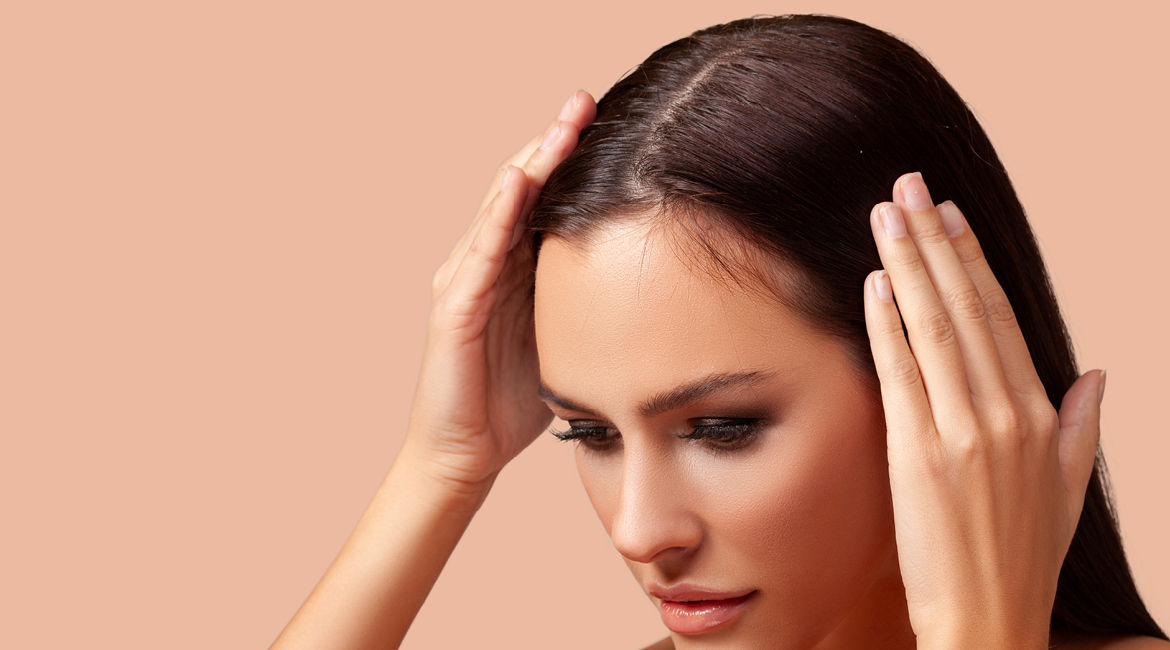Hair loss is one of the most common problems experienced by men and women of all ages, significantly impacting their quality of life. It becomes more pronounced during periods of heightened stress, specific drug treatments, or simply as a natural consequence of aging. Additionally, during seasonal changes, many people notice differences in the texture, appearance, and overall quality of their hair, often becoming concerned about the number of hairs they see on their combs. This raises the question: Can the season or weather affect hair loss?
An average person has between 100,000 to 150,000 hair follicles on their scalp. Losing up to 100 hairs daily is considered normal and shouldn’t raise concern. Yet, if someone observes a consistent increase in daily hair loss for two or more months, resulting in noticeable hair thinning, a visit to a dermatologist is highly recommended.
What factors contribute to increased hair loss? Hair growth is a complex process that involves three stages: the growth phase, lasting approximately two to eight years during which the hair develops; the resting phase when the hair remains dormant; and the shedding phase when it starts to fall out. Genes and hormones play a primary role in determining the quality and density of our hair. However, various hormonal imbalances, particularly polycystic ovary syndrome, can exacerbate hair loss. Similarly, this can occur after undergoing certain chemical hair treatments (such as perms, bleaching, or hair straightening) or through styling involving heat-emitting devices. Inadequate intake of proteins, vitamins, minerals, amino acids, and fatty acids in the diet may result in lackluster hair, no noticeable growth, or hair loss. Strict diets, specific illnesses or autoimmune conditions, infections, daily stress, or, as seen in the current period, pandemic-induced stress can also contribute to hair loss.
How does diet impact hair health? The relationship between diet and hair loss remains consistent regardless of seasonal changes. Hair relies on nutrients obtained from the food we consume to grow. Insufficient intake of nutrients like proteins, vitamins, and minerals can lead to hair loss, which may worsen over time. Crucial nutritional components necessary for healthy hair include iron, zinc, vitamin A, a complex of vitamins B2, B5, B6, B9, B12, and specifically biotin (B7), as well as vitamins C and E, along with essential fatty acids like omega-3 and omega-6.
What about seasonal hair loss? Is it a myth or reality? Although the issue of seasonal hair loss remains a topic of discussion within the dermatological community, the prevailing consensus suggests that seasonal changes can indeed trigger increased hair loss, particularly among women. Women experience more frequent hormonal fluctuations monthly, impacting their mental state and, consequently, contributing to hair loss. Specifically, during summer, factors like hormonal shifts or stress, coupled with exposure to sea salt, pool chlorine, or sunlight, can hasten hair damage. Nevertheless, studies indicate that in summer, hair growth heightens as a protective response against sun exposure on the scalp. The warmer climate also boosts the availability of nutrients essential for keratin production, the protein vital for hair health. However, following the summer months of accelerated hair growth, many women report excessive hair loss, especially during autumn.
How do we tackle hair loss? The key to halting hair loss and restoring hair density lies in promptly and accurately identifying its cause. This is achieved through a specialized diagnostic examination that meticulously studies the hair follicles in detail using trichoscopy. When combined with genetic hair loss tests, this comprehensive approach helps detect the true cause of the problem. Once the cause is identified, a personalized treatment protocol is recommended, integrating cutting-edge, non-invasive methods such as autologous Magellan® mesotherapy and low-level LASER phototherapy. Additionally, various potent formulations are applied locally, and in cases of vitamin deficiencies or other necessary elements, specific supplements are included in the treatment. Trichoscopy is repeated every three months throughout the treatment duration to monitor hair follicles’ condition, allowing for an assessment of treatment effectiveness and necessary readjustments, if required.





